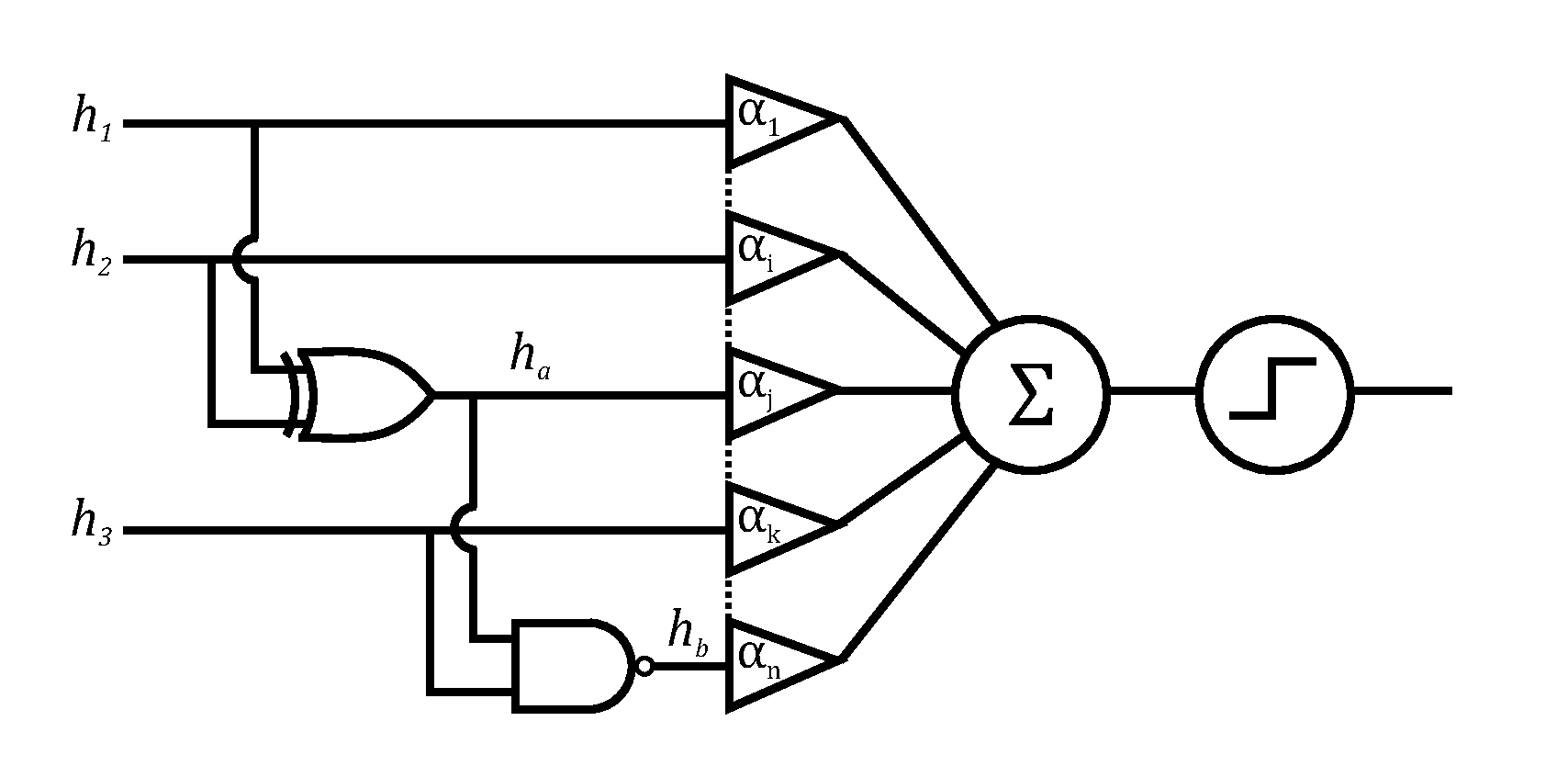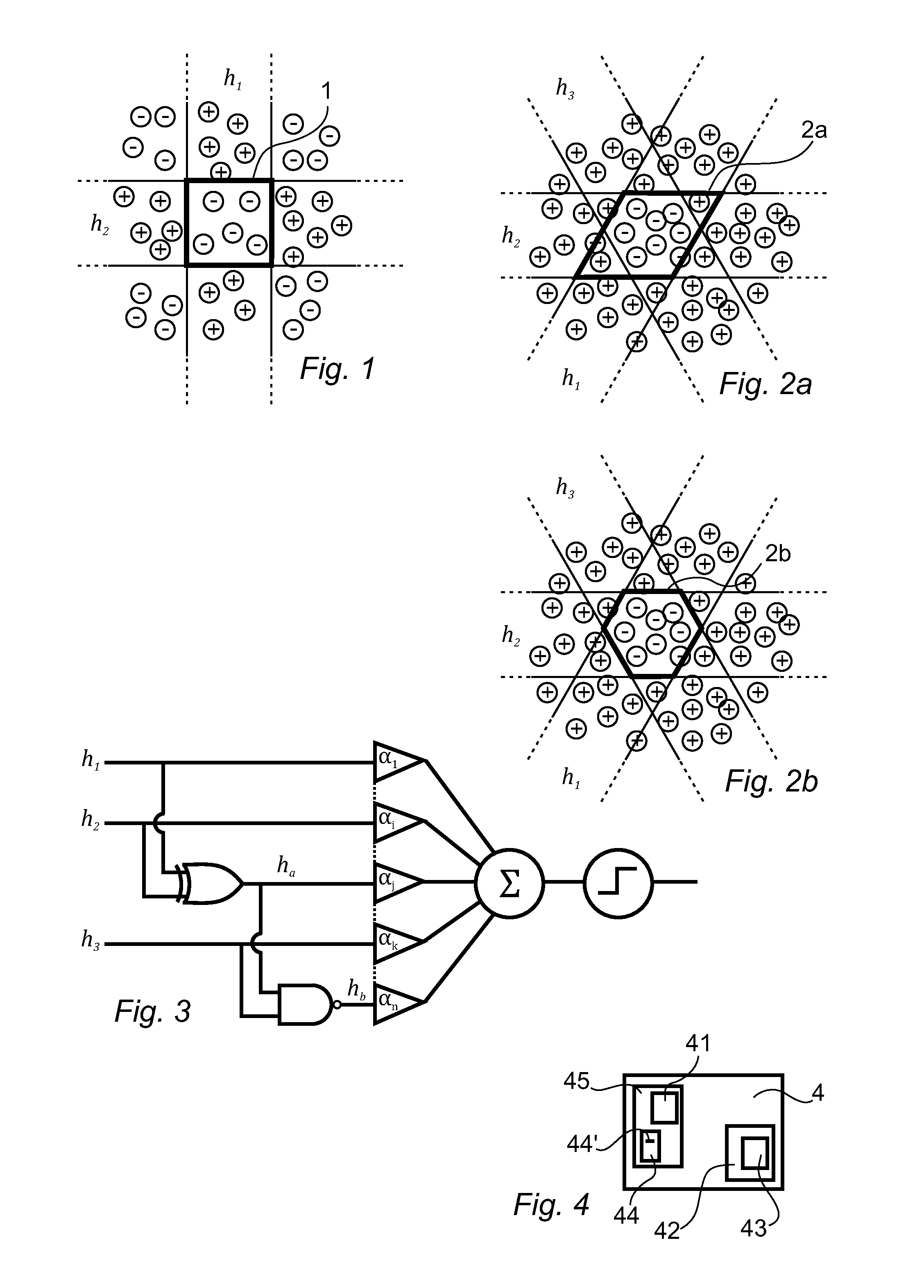Nonlinear Classification of Data
a high-dimensional data and nonlinear classification technology, applied in the field of nonlinear can solve the problems of difficult use of known methods out of the box, difficult implementation of online classification of high-dimensional data, and inability to classify targets with significant intra-class variation against a large background class, etc., to achieve compact and efficient, easy to implement, and increase the ability of strong classifiers
- Summary
- Abstract
- Description
- Claims
- Application Information
AI Technical Summary
Benefits of technology
Problems solved by technology
Method used
Image
Examples
Embodiment Construction
[0035]In order to define the basic notation of the present invention the AdaBoost algorithm will be described, closely following Freund et al. The input to the learner is a set of training examples {(xi, yi)|iεl}, where xiεχ is a feature vector and yiεy={0,1} is the corresponding label. The algorithm maintains an importance distribution over the training examples and Dt(i) denotes the weight on the ith example at round t.
[0036]The classification function of the strong classifier, H(x)=Σt=1Tαtht(x), is a linear combination of the classification functions of the weak classifiers. The classification function is thresholded to determine class membership.
[0037]The AdaBoost algorithm is as follows:
Require: {(xi, yi)|i ∈ I},T Initialize D1(i) = 1 / |I| for t = 1 to T do Train ht : χ→ y using distribution Dt Choose α∈ Dt+1← update weight distribution end for return {α1, ... , αT}, {h1, ..., hT}
[0038]The goal of the weak classifier ht is to minimize the weighted classification error, εt:
ε...
PUM
 Login to View More
Login to View More Abstract
Description
Claims
Application Information
 Login to View More
Login to View More - R&D
- Intellectual Property
- Life Sciences
- Materials
- Tech Scout
- Unparalleled Data Quality
- Higher Quality Content
- 60% Fewer Hallucinations
Browse by: Latest US Patents, China's latest patents, Technical Efficacy Thesaurus, Application Domain, Technology Topic, Popular Technical Reports.
© 2025 PatSnap. All rights reserved.Legal|Privacy policy|Modern Slavery Act Transparency Statement|Sitemap|About US| Contact US: help@patsnap.com



